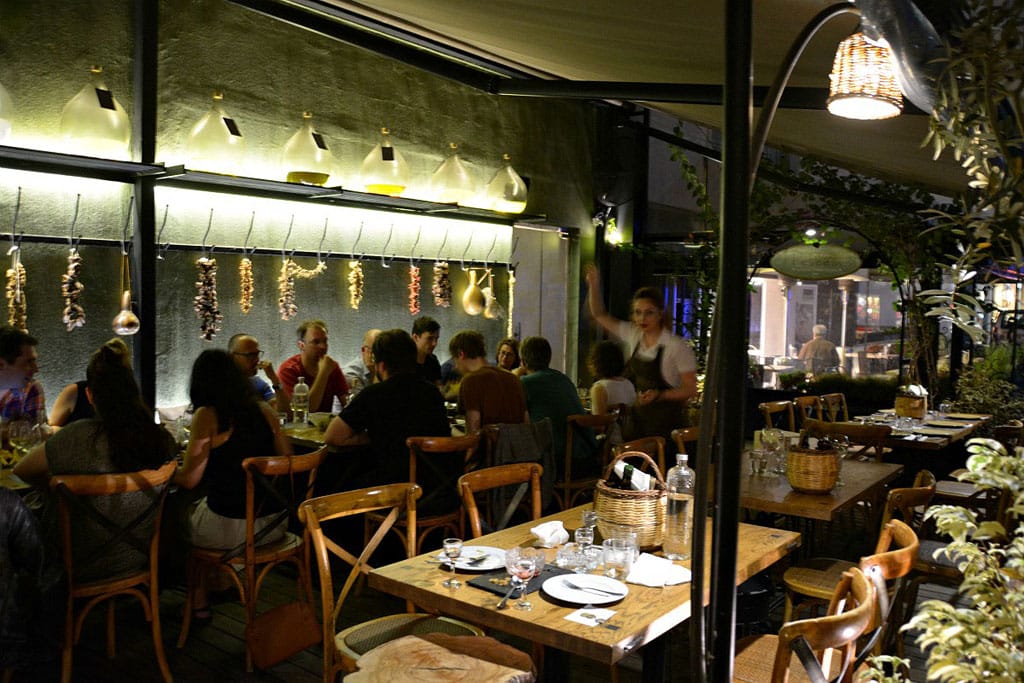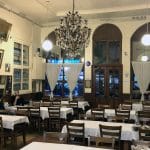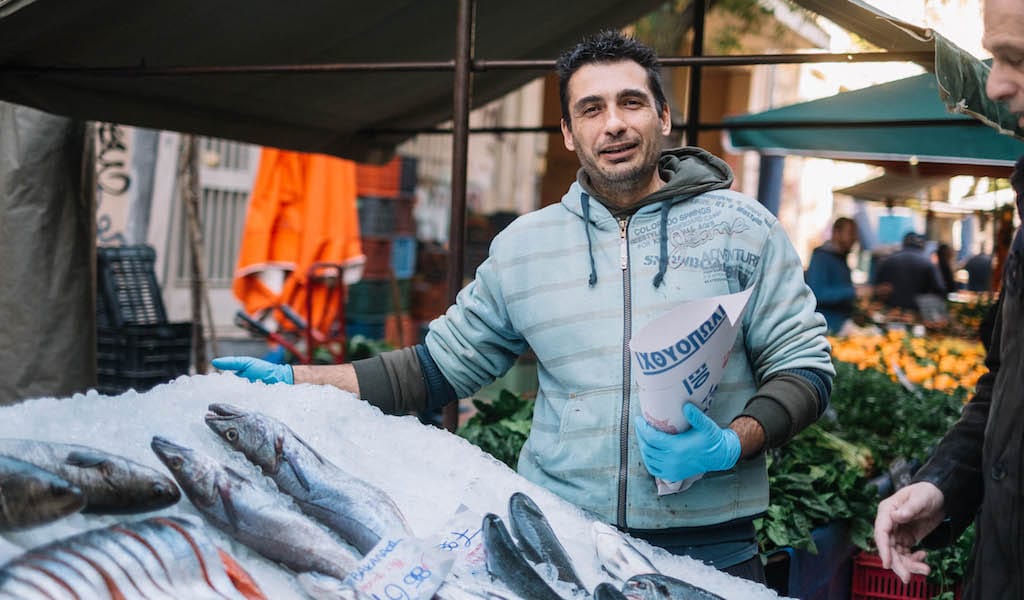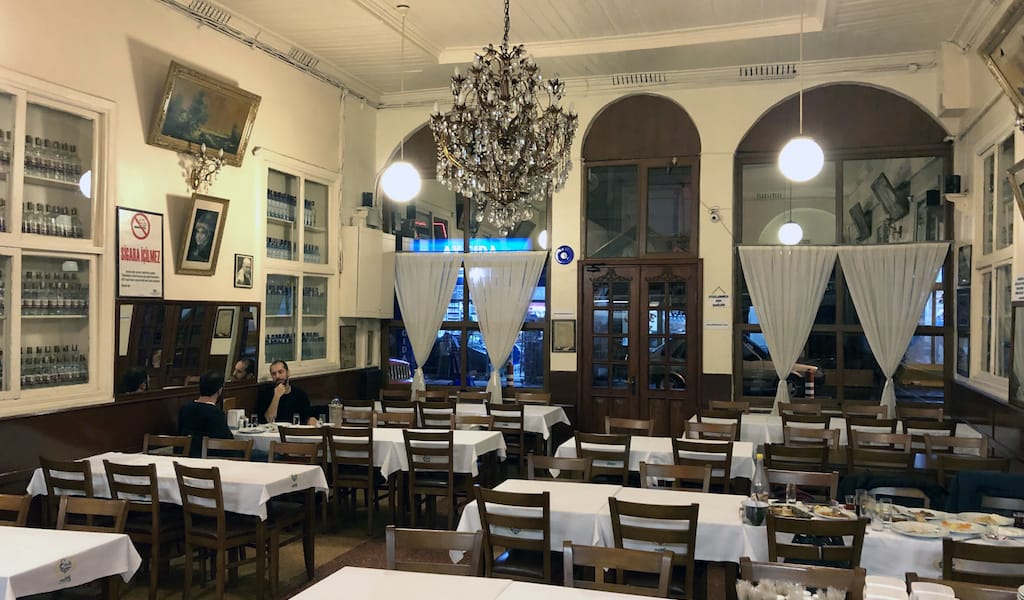“We say if you leave a Cretan pappou [grandfather] alone in the Cretan mountains, six months later you’ll find him fatter,” said dietitian-turned-restaurateur Panayiotis Magganas. He smiled wide. “Our land is incredibly rich.”
The fertility of Greece’s largest island is part of the inspiration behind Peskesi, his restaurant in old town Heraklion that showcases the diversity of Crete’s cuisine through recipes he says are slowly being forgotten. “Even people from Crete don’t know some of these dishes,” he said.
Set in an intricately refurbished Byzantine-era mansion, the restaurant still retains some of the charming details of the once-collapsing space, including a 100-year-old lemon tree that is the centerpiece of one dining room. Stone walls, wood-beam ceilings and heavy wood tables are enhanced by soft lighting. Every space flows into the next, including charming outdoor alleyway seating and an open-ceiling dining room. Magganas successfully brought the period home back to life, just like many of his dishes.
When asked about the name of the restaurant, Magganas folded his arms across his burly build, his eyes crinkling with pride. “In Crete, it’s a word we use for a gift of hospitality, including food or drink, to welcome guests,” he said as he poured raki, the traditional anise-flavored spirit, into small glasses. Toasting with raki remains a steadfast Cretan food tradition and is the way meals begin at Peskesi.
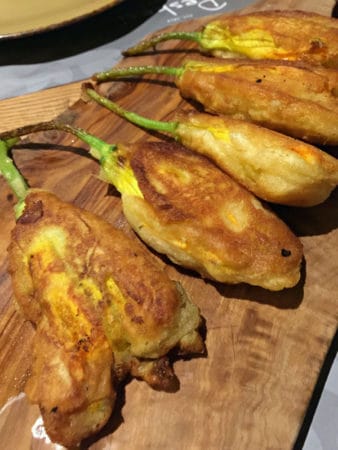 Classic Cretan mezes filled the table. We had a dakos (rusk) salad followed by kolokithanthi, soft zucchini flowers stuffed with mizithra (tangy, soft white cheese), and fava, a yellow split pea puree, made from a Haraso village recipe.
Classic Cretan mezes filled the table. We had a dakos (rusk) salad followed by kolokithanthi, soft zucchini flowers stuffed with mizithra (tangy, soft white cheese), and fava, a yellow split pea puree, made from a Haraso village recipe.
For main dishes, we ordered the avgo kalamoura, a fluffy omelet filled with soft cheese, walnuts and almonds, and rich, cheese-topped melitzanes me hondro, eggplants baked with trahana (sun-dried grain). The siglino sizzled upon entrance. The palm-sized smoked pork chops hung on hooks, kept warm by a tiny flame burning on the small wooden board. We blew out the flame as curls of smoke wafted around the chops, releasing the heady fragrance of thyme and sage.
As more dishes were presented, Magganas explained the Cretan origins of their sauces, the use of select herbs, ancient cooking methods and his dedication to gathering recipes from around Crete. Cretans cared about using locally grown organic ingredients before anyone could define “organic,” and Magganas takes great pride in raising his own animals, produce and fruit and making excellent extra-virgin olive oil and homemade spirits. He sources what he can from his 60-acre farm in Hersonissos.
The drinks list is a testament to Cretan resourcefulness and imagination. Each cocktail boasted at least one local ingredient, such as thyme-honey syrup. Homemade soft drinks featured Cretan herbs like faskomelo and locally produced honey. Many wines on the list were produced from the Cretan Vidiano grape variety.
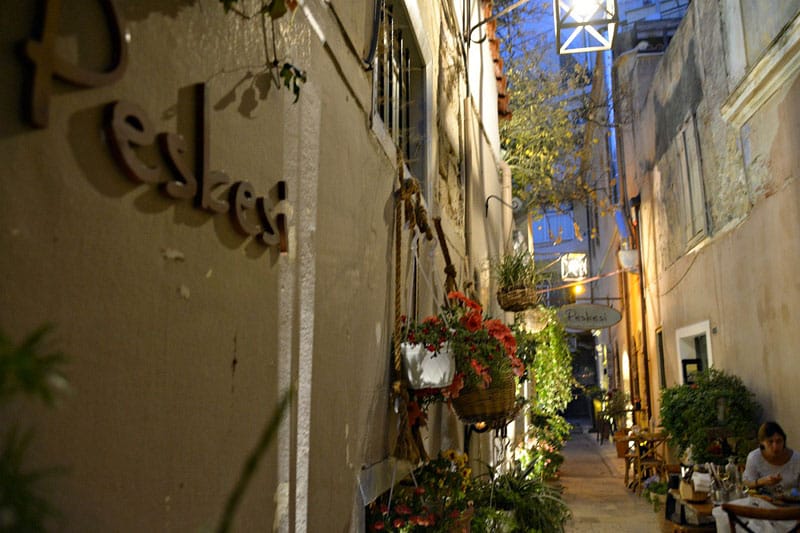
The dining experience also pays homage to the Cretan imagination of the past. The next plate wasn’t food but a little paper stick with what looked like a piece of dried chewing gum around it. We learned that it was sugar candy that sealed a fortune, a Cretan festival tradition called zaharota mantinadakia (“sugar message”) – the Cretan fortune cookie!
Next, Magganas asked if I had ever heard of the Cretan spa. A page of the menu was dedicated to explaining a tradition called sarantavotano (“40 herbs”), in which a selection of wild dried herbs are boiled together to create an aromatic and healthful tea. Before we could pronounce the word properly, a waiter spread out tea strainers, glasses of hot water and dishes of fragrant dried herbs. A warm, cloudy mist rose before us like the air of a thick forest on a clear, cool morning. Magganas dipped a cloth in the mixture and offered it to us, explaining that the brew is also used as a home remedy and for a baby’s gentle first bath.
The range of desserts at Peskesi is impressive. There was the familiar creamy, thick Greek yogurt topped with a colorful dollop of spoon sweet as well as the more unfamiliar, like gastrin, a Minoan civilization treat dating back more than 5,000 years ago. Made with pastry layers, poppy seeds, pepper and fresh nuts, the dessert was drenched in sweet wine must and honey syrup.
We asked Magganas what the success of Peskesi so far has meant to him. “Peskesi is a window on the most traditional Cretan cuisine,” he said with soft-spoken certainty. “This is my way to show off what we have always had to offer, raise it up, so it is never forgotten.”
Native New Yorker Marissa Tejada is an author, travel writer and freelance journalist based in Athens, Greece. She also shares her travel and food experiences throughout Greece and Europe on her blog, Travel Greece, Travel Europe.
Marissa TejadaMarissa Tejada
Published on August 09, 2016
Related stories
May 12, 2021
AthensQuick bite: On our Keramikos food tour, we will walk through the weekly street market and get a taste of the creativity and tradition that reside here, visiting neighborhood institutions, both old and new. From Cretan homecooking to classic Northern-style pastry, spankingly fresh seafood to souvlaki al fresco, it’s a miracle that Keramikos remains a…
April 19, 2019
IstanbulDown the street from Istanbul’s upmarket Etiler neighborhood and above the even-glitzier shoreside quarter of Bebek lies Hisarüstü, a ragtag maze of unplanned urban growth that happens to be adjacent to the newer campus of Bogaziçi University, Turkey’s most prestigious college. Once upon a time the area was home to a pig farm, but Hisarüstü…
February 6, 2019
IstanbulThe main street of Istanbul’s Yedikule neighborhood is steeped in history: it is dotted with exquisite buildings built a century ago and passes through a gate that is part of the 4th-century Theodosian walls, parallel to which are a series of historic urban gardens that have been farmed for hundreds of years. Once a well-to-do…







































